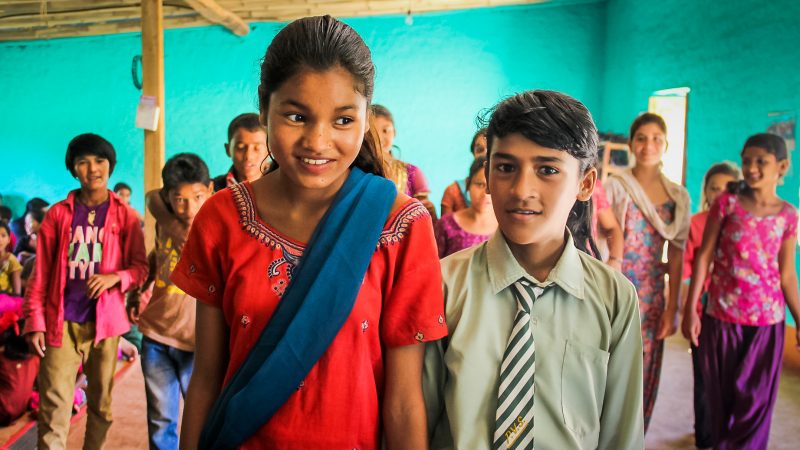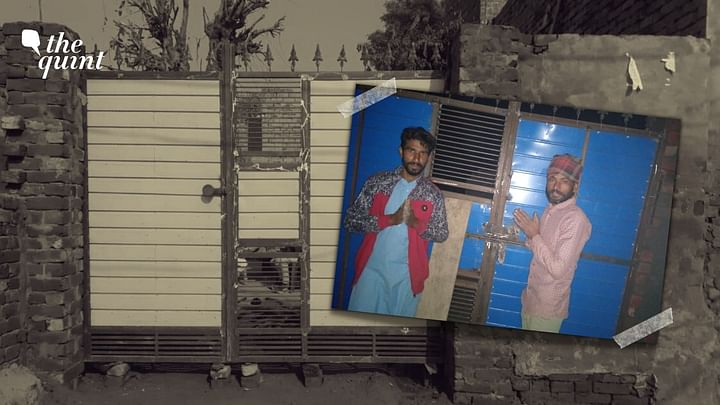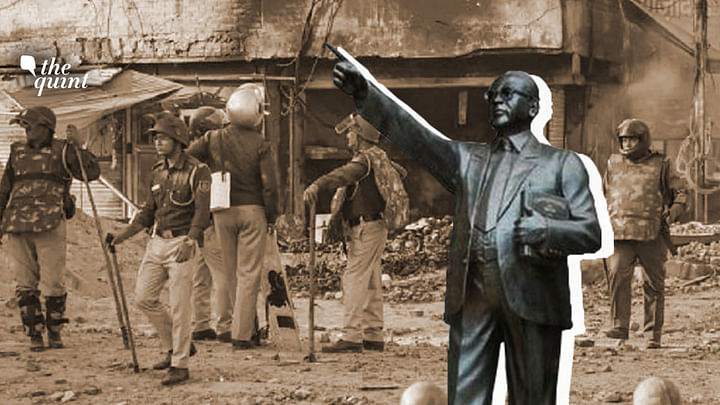MEET THE WRITER
‘Does upper caste society acknowledge the private reservations it has had for years?’: Yashica Dutt
An interview with the writer of ‘Coming Out As Dalit’.

Yashica Dutt. | Calvin Tso Admerasia
2/2/2020 · Vighnesh Hampapura
I read Yashica Dutt’s memoir Coming Out As Dalit when Professor Rita Kothari suggested it as additional reading for our Dalit Literatures course at Ashoka University. Dutt’s was an unusual story: She had hidden her caste from others, disengaging from conversations around caste in the fear that it might reveal her identity. After graduating from St Stephen’s College, Delhi, Dutt went to Columbia University, New York, and has been living and working in the US since then.
But with Rohith Vemula’s death in 2016, much of what had remained within her – the experiences in childhood, the courses at Columbia, the wish to write and record – burst forth in a stunning memoir. To me, the book stood out for two reasons. One, it wove the stories of a diverse group of Dalits into Dutt’s own journey. Two, along with the sharp journalism there was her critical insight into the relationship between caste and education, which, as a student whose caste supposedly had no bearing – and thus all the bearing historically – on education, was of great consequence.
I met Dutt at the Jaipur Literary Fest, where she spoke about her book, her experiences, the systems that fail people, reservations, and the current government’s appropriation of the Dalit identity. Our conversation, however, was focused on questions that surround the education system and the looming presence of caste everywhere.
People talk about “merit” when they talk about education. And there is, via “merit”, an argument against reservation in educational institutions, that “merit” does not get enough seats, that universities should value only “merit”. Even today we have such an argument, say with respect to JNU: The university should be shut down because there is no real merit there. What they mean is that the students who go to JNU are mostly from the “reserved” categories. Could you unpack this idea of “merit” for us?
Yeah, let’s talk about what they mean by “merit”. Are they talking about IITs? That is, clearing the entrance exams there, the JEE – is this “merit”? Anybody who has taken the entrance exam or done some preparation for them has probably gone through the experience of going to coaching centres. Do you know what exactly happens at coaching centres?
Oh, I do, yeah…
You look like you do. They give you...there are these designed questions, these tricks and formulae and methods and ways to solve them. It isn’t that people who cannot solve them are dumb. It’s just that the people who end up solving them have practised them, have been coached, have been mentored, have had the ways to solve the equations in less than two minutes. How did they get this education? With money. Somebody who does not have access to money does not have access to “merit”.
So, I think, before we talk about Dalit students not being “intelligent”, we need to talk about how we became “intelligent” in the first place. This is a question about the caste system, but also a question about India’s education system: Does it promote critical thought? If it did that, and entrances were based on critical arguments, then we could say: This argument makes sense, while that does not.
But it does not do that. Here we are talking about the tools to build a skillset to solve a set of problems on paper: Without these tools, you cannot do well here. Instead of saying, then, that Dalit students are not meritorious and thus diluting the campus space, let us be the socialist state that we are, and help students to have access to a system that they don’t.
One of the arguments made once we talk about the economic factor is that there are students who are poor in the “unreserved” categories too. What would your response be to that? Because it’s a very alluring argument for people to mount against reservation.
Absolutely, and that is a totally valid argument – that there are poor “general” quota students as well. But how are they treated by the teachers? What kinds of support systems do they have access to? Do they have a teacher who asks your last names and decides on grace marks, for instance? If you’re a “quota” student, how are you seen and treated?
Of course, money is the primary issue. Dalit students who have money access coaching centres too. But that’s not the only question. We are asking how these Dalit students are treated once they are inside. Who are the students dropping out of universities and educational spaces? Most of them are Dalits. SC and ST students.
And it’s not because they are unintelligent…
Exactly, not because they’re bad [students]. Studies and surveys document how casteism is institutionalised in these spaces. When you enter these hostile spaces as reservation students, your mental health takes a big hit. There’s first the conversation we need to have about mental health in general, which we don’t; and then about the fact that students with no resources, students who are institutionally disadvantaged, are affected the most. And you may be rich or poor, but if you’re a “quota” student, you’re institutionally disadvantaged.
Yes, you lack other forms of capital that may not just be money. You touched upon many topics that I wanted to discuss. “Merit” has another narrative, and that is to paint a rosy picture of university spaces, that they are about education, that they treat all students equally, for all students are meritorious. In other words, universities do not harbour caste discrimination. And one has to only…
Oh, look at Rohith Vemula.
Exactly, one has to only read Rohith Vemula’s letter. How have you seen caste discrimination in these elite spaces of education?
Personal experience?
Anything – personal experience or experiences you know about.
Okay, personal experience. I went to St Stephen’s and Columbia. Stephen’s is caste-agnostic, as I mentioned in my session: It’s not caste-neutral or caste-blind, but caste is concealed very well. As far as other institutions are concerned, if you’ve read my book, I talk about this professor who constructed a well, and it was called the Brahmin’s well. And you could draw water only if you were upper-caste.
I have another professor who is Dalit talk about people not sitting on the chair he sat on despite his being the head of the department. Dalit students – this happened to Rohith – don’t get their fellowships. There was a study by [Surinder S] Jodhka – if I remember correctly – where he revealed that Dalit students were told when they applied for the Rajiv Gandhi fellowship that they did not deserve a government handout.
I know students who have waited for years and years for a PhD guide. These are all examples of institutional casteism. In fact, quotas have become a way for people to identify who a Dalit student is. And once you’re recognised, you are a Dalit student; ergo you are merit-less.
And merit on their terms. Tell me, what would merit ideally be?
What would I consider merit? Diversity. Diversity is merit, quality, excellence. Not only in terms of the Dalit experience, but everybody’s experience. Let’s get a poor upper-caste person who farms; let’s get someone who knows how to till the land to teach, give us their experiences. Have a Dalit person who has different ideas of knowledge production show you how to create art. That’s how you create a just and equal society with equal properties for all.
That expands the field of knowledge itself. It has only constituted the written word and theory.
And is also limited to a certain caste.
Yes. A review of your book states that one of the common threads in the stories of Yashica Dutt, Kancha Ilaiah Shepherd, or Sujatha Gidla has been about their mothers working really hard to get them a “ticket out of their caste”.
And Rohith’s mother, Radhika aunty.
Yes. I want to think about that phrase: “ticket out of caste”. And this goes back to one of our classes where we discussed caste and privilege. If you don’t know your caste, if you can say that you don’t know your caste, then it’s mostly true that you’re privileged.
Most likely. There are instances, though, where a lot of Dalit parents conceal caste to shield their children from discrimination, and inevitably when the children find out, they feel disgust, revulsion and shame. But most likely, if you can afford to say, “I’m so progressive that I don’t know my caste”, then you probably are upper-caste.
I want to discuss that difference between these privileges. You write in your book how you could lie about your caste, which is a very different kind of privilege from not knowing your caste at all, and both these are different from being able to conceal caste to shield children from discrimination. And these differences are important to register, because one can mix all of this up and say: ah, everyone is now a part of equal society.
But they’re not. I had the unique privilege of being able to use other caste labels because I pass off easily. If I didn’t pass off easily, nobody would believe me even if I tried. Or if I lived in a rural setting where the village would be divided according to jats, like Valmiki village or so on, everyone would know even without my telling them that I belonged to the Valmiki caste, or this or that caste. There are gradients. And of course we all have our privileges. Urban Dalits have more privilege than rural Dalits; richer Dalits than poorer Dalits – but before we get into discussing privileges among Dalits, let’s examine the larger society.
Of course. To question Dalit privilege and homogenise it with upper-caste privilege is to derail the conversation.
Exactly. Is society confronting itself at how caste has existed within its folds for years and how different people have either benefited or have been disadvantaged? Are we – the “general” upper-caste society – acknowledging how we have had private reservations because of our caste for centuries? Let’s reckon with that, right?
Cases like mine are rare: Can a Dalit girl in rural Bilwada, Rajasthan hide her caste like I did? No, she can’t. She doesn’t have the same opportunities that I did. And the question is: How do I use this opportunity? Can I use my marginalised voice with a relative privilege to make a noise in a world that I have somehow gained access to, a world that didn’t want me in the first place?
And you are indeed, even here at JLF. That was fascinating. A few minutes ago, you talked about being institutionally disadvantaged. And that seems odd, because institutions are supposed to do otherwise. Reservation, which is a guarantee to one’s right to education – because it has been historically denied to you – turns to be, in the way we speak or think of it, a favour, as you yourself said, “a government handout”. Society’s perspective on reservation is so negative that its perspective on a “quota” student is the same, because she seen as actively exercising a right but as passively receiving a favour. Is there a way we can address this issue institutionally? What can colleges and universities do?
I think that’s a really good question. Most universities have this, but all of them should have SC-ST cells in place, support systems for Dalits, treat them as people who are overcoming their generational trauma rather than as beneficiaries of a system that wasn’t theirs to begin with. Let’s remember that they are now equal stakeholders now in this system.
Compassion, empathy – all these of course should come from everywhere. And professors, especially professors, need to let go of their casteist mindsets and do their job as teachers, to really uplift all students. All students will not have equal abilities and that’s why teachers must focus of those who don’t have and know enough. They need upliftment.
Not as a favour, but because they deserve it. Yes. Now my last question, and this is from your book. You say there that more often than not your success is mixed with a sense of guilt. And what would you tell students who may feel this same sense of guilt? Because while it’s understandable, it’s misplaced as you point out yourself. When people go to their rooms and say, “oh, this isn’t mine, this success isn’t me”, it’s even more destabilising.
Success is yours. You worked really hard to be here. You came here against all odds, and you beat all of them to become a part of a society that had structural barriers for you. Don’t allow anybody to diminish that struggle, even yourself. Be kind to yourself – I know this is a lot of therapy talk, but I’ve been through it all – and just own the struggle, own the journey, and own the success too. It’s really funny, er, you might have noticed I’ve suddenly become emotional…
I’m really sorry if I…
No, no, no, please don’t be. You see, something happened this morning, and you can see this if you go to my twitter handle: I’ve been attacked for coming to lit-fests, talking about my book and “promoting myself”. There is a section of twitter handles – I’m not sure of their caste location, but they say they are from the “lower castes”, and that’s probably true – that say that I don’t deserve to have the voice that I do, that I’m not a representative of the movement.
Hmm, if you include this part, I just want to say: I have never claimed to represent anybody but myself. If you have an opinion about the book, don’t just go with what the title says. Please read the book – it’s a work of journalism, a work of non-fiction, there’s research, data and analysis. Of course there’s a thread of my own story, but I’ve also used other stories and voices to amplify the story. I’m not centring myself in this discourse.
As somebody who now seems enormously privileged, not only am I feeling bad about the book and all this – sitting here and talking to you – but I’m also being made to feel bad about it. All of this is seen as personal promotion and book-tour, and that’s gross and tasteless. And this is from within the community.
All of this does work into guilt: should I feel happy about myself? Do I deserve this? But these aren’t the right questions, and this isn’t how we should be thinking about it. If I worked hard, I deserve credit, as everybody else does. There are so many other stories that deserve to be told, and I had great privilege to get published that many others don’t. But it isn’t my fault, it’s how the system is built. And we’re fighting it. I have clawed my way in. I had certain advantages. And let’s work together to bring those advantages to everyone. I can do my part.










